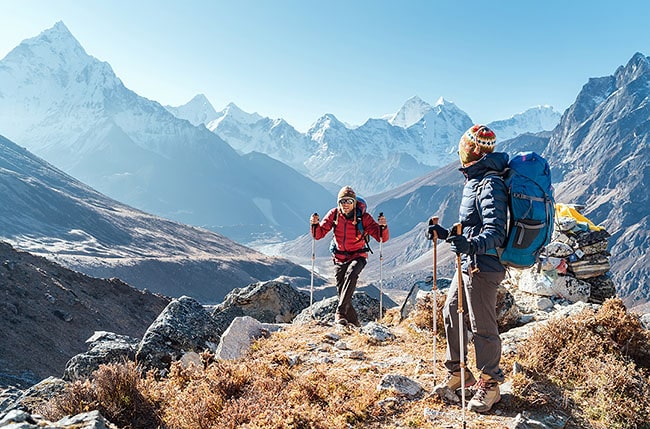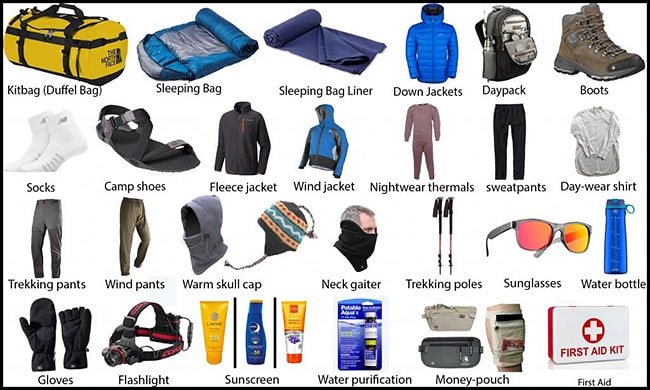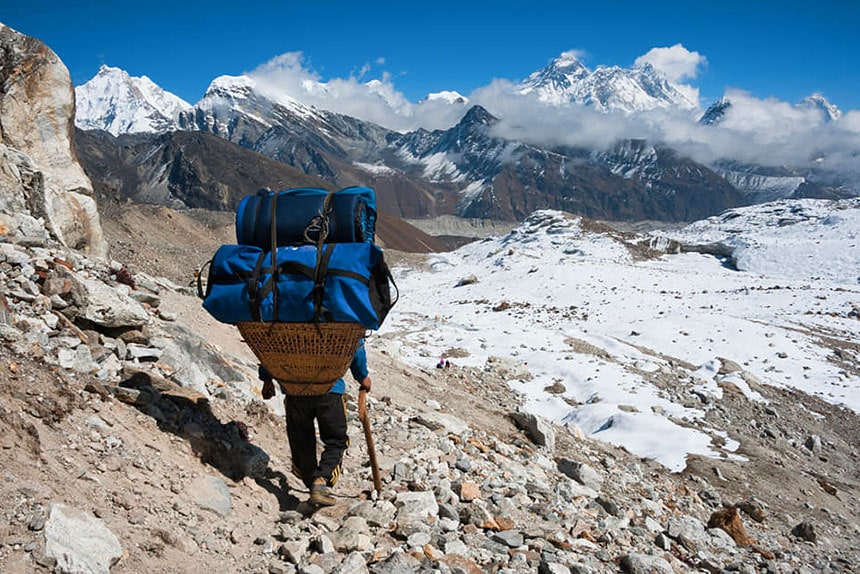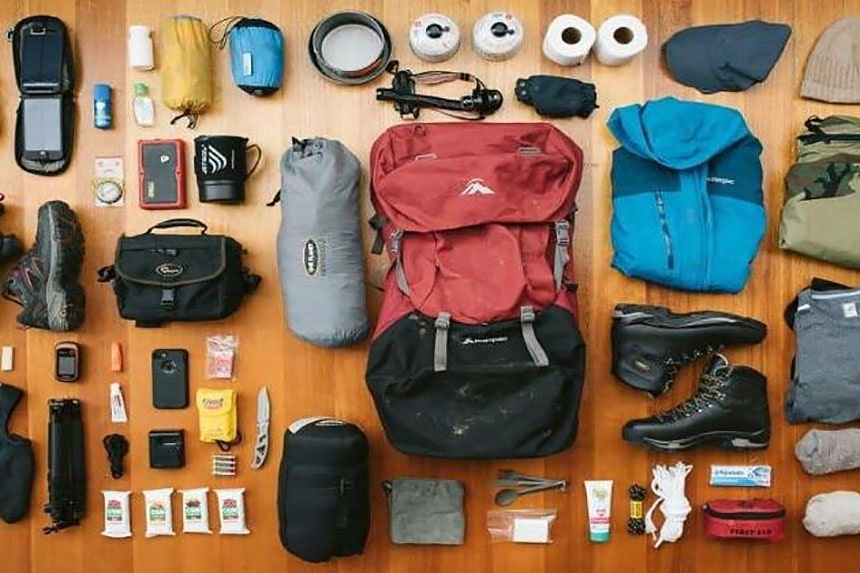Packing list for trekking in the Himalayas
Whether you're heading to the famous Everest Base Camp, tackling the high passes of the Annapurna circuit, or exploring the hidden world of Upper Mustang, having the right gear can make or break your trek. Nepal's treks vary greatly in altitude, remoteness, and accommodation options, but there are common essentials that apply to nearly every trail in the Himalayas.
Layering for all conditions
The weather in the mountains is unpredictable. Days can be warm and sunny while nights turn icy cold, especially at higher altitudes like Gorak Shep near the Everest Base Camp or Thorong Phedi before crossing the Thorong La pass on the Annapurna circuit.
You'll need a base layer that wicks moisture, a warm fleece or down jacket for insulation, and a waterproof outer shell to protect against wind or sudden rain. Trekkers heading to the Three Passes trek or the Manaslu circuit should be especially mindful of cold weather at night, and pack accordingly.
Footwear
A sturdy pair of broken-in trekking boots is one of your most important items. Trails in Nepal can be rocky, steep, and muddy. Whether you're descending from Muktinath or climbing up to Kala Patthar, your feet will thank you for good ankle support and reliable grip. Also bring lightweight shoes or sandals for evenings in teahouses.

Sleeping bag
Most treks in Nepal are teahouse treks, which means you'll be staying in small lodges run by local families. While blankets are provided, they're often not enough at higher altitudes. A warm sleeping bag rated to -10°C is recommended for treks such as the Langtang Valley and most of the other treks in the Himalayas. A sleeping bag liner adds extra warmth and helps keep things clean.
Daypack and duffel bag
Trekkers usually carry a small daypack with essentials like water, snacks, sunscreen, and a camera. The rest of the gear is carried by a porter in a duffel bag. A 30-40 litre daypack is ideal, while the duffel can range from 60 to 80 litres depending on the trek length. On longer routes like the Dhaulagiri circuit or if you're doing the Everest Base Camp trek via Gokyo, packing smart and light becomes even more important.
Health and hygiene
A small personal first aid kit is essential. While guides often carry a group kit, it's wise to bring blister plasters, medication for altitude sickness, and water purification tablets or a filter. Showers aren't always available, especially in colder, higher villages. Wet wipes, hand sanitizer, and biodegradable soap are useful on treks like the Upper Mustang or the Upper Dolpo region.
Clothes and accessories
Aside from your main clothing layers, don't forget a sun hat, a wool beanie, gloves, a buff or scarf, and sunglasses with UV protection. The sun can be intense, particularly at altitude. Treks like the Pikey Peak Trek, which offer panoramic views of Everest from lower elevations, can still expose you to high UV levels during clear days.

Electronics and power
Many teahouses charge for electricity, and power cuts are common. A power bank and a headlamp with spare batteries are essentials. Solar chargers can be useful on longer routes such as the Makalu Base Camp trek where facilities are basic. Don't forget spare memory cards if you plan to take a lot of photos.
Final thoughts
Your packing list will vary slightly depending on the time of year and the trek you choose. Summer is the best time for treks in Ladakh while spring and autumn are the best seasons for most treks in Nepal, but higher routes like the Everest Three Passes or the high plateaus of Upper Mustang may require warmer clothing even in these months. Always check the specific gear recommendations for your route.
Packing wisely will keep you comfortable, safe, and free to enjoy the incredible beauty of the Himalayas.


 Hemis to Tso Moriri
Hemis to Tso Moriri




